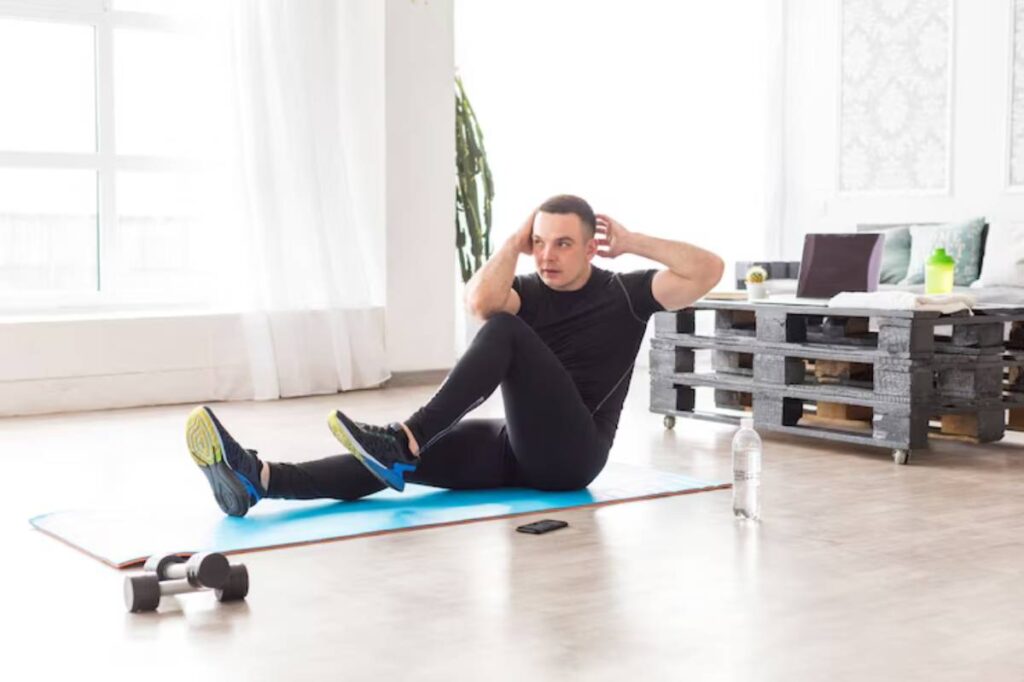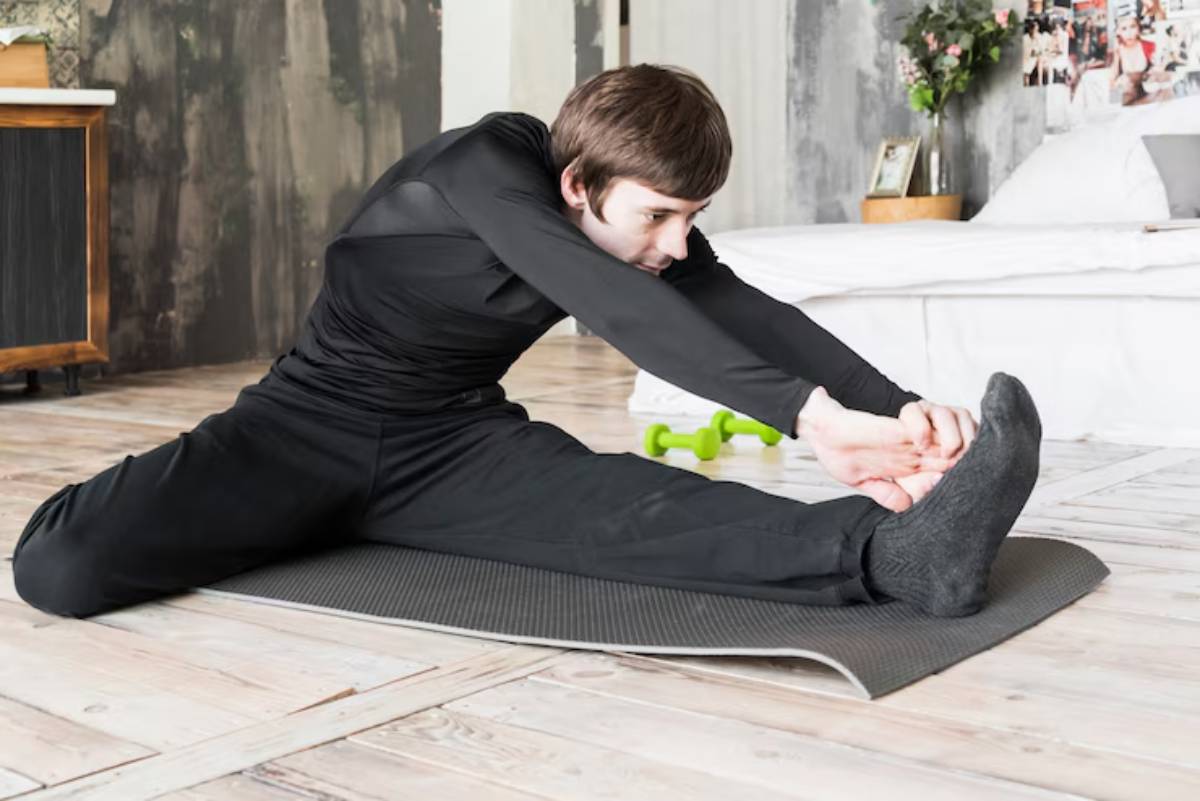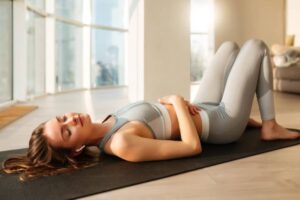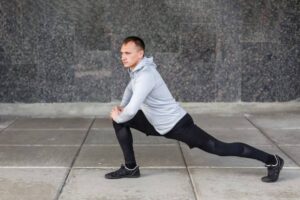The Fitness Blog

Low-Impact Workouts for Active Rest Days
Let’s face it—when you hear “rest day”, you might picture Netflix, snacks, and staying horizontal. And while there’s nothing wrong with a sofa session now and again, recovery doesn’t have to mean total stillness.
In fact, active rest day workouts—especially those based on low-impact exercise—can actually speed up your recovery, ease muscle soreness, and keep you feeling energised without placing further stress on your body.
This blog is your go-to guide for gentle training routines that still support your fitness goals. Whether you’re new to training, recovering from a tough session, or simply need to move without pressure, we’ll explore the best ways to stay active while giving your body the break it needs.
What Is an Active Rest Day?
It’s About Movement, Not Intensity
An active rest day involves light physical activity that promotes blood flow and mobility without causing fatigue or further muscle damage. The idea isn’t to train hard again—it’s to recover smart.
Rather than doing nothing, you’re staying in motion with just enough effort to:
- Reduce stiffness
- Improve circulation
- Enhance muscle repair
- Support joint mobility
- Clear metabolic waste
For most people, an active rest day might feel like a walk in the park, because quite literally, that could be one of the best things you do.
Why Choose Low-Impact Exercise?
Protecting Your Joints While Aiding Recovery
Low-impact exercise refers to movements that don’t involve heavy joint loading or jarring impacts—think gliding, flowing, stretching, and controlled movements.
On active recovery days, this type of training is especially valuable because it:
- Minimises stress on the joints and connective tissue
- Keeps your heart rate in a lower recovery zone
- Promotes circulatory flow to tired muscles
- Helps maintain flexibility and range of motion
- Improves overall movement quality and posture
Over time, weaving low-impact routines into your schedule can enhance training longevity and reduce injury risk.
The Best Active Rest Day Workout Ideas
1. Walking: Simple, Underrated, Effective
A brisk walk may not sound revolutionary, but it ticks all the right boxes for recovery:
- It’s low-impact
- You can do it anywhere
- It gets your blood flowing
- It clears the head
Aim for 20–40 minutes at a relaxed pace. You’ll warm up your muscles without taxing them.
Bonus: Walking outdoors provides the extra benefit of sunlight and fresh air, which is great for mood and mental clarity.

2. Swimming and Aqua-Based Movement
Water provides gentle resistance without gravity’s pull, making swimming or aqua jogging excellent for recovery. It’s especially ideal if you’re dealing with joint sensitivity or fatigue.
Swimming at a leisurely pace can:
- Alleviate tension
- Improve circulation
- Mobilise stiff areas without impact
Even simple exercises, such as leg swings, walking, or lunging through waist-deep water, can be incredibly effective as part of a gentle training routine.
3. Yoga for Recovery and Mobility
A light yoga session offers the ideal blend of:
- Stretching tight areas
- Controlled breathing
- Calm, focused movement
Styles like Yin or Restorative Yoga are particularly good for active rest. They’re slow, meditative, and help downregulate your nervous system.
Yoga can also reduce post-workout stress and improve sleep, both critical for full recovery.
If you’re looking to enhance flexibility, pairing breathwork with stretching can take your session even further. In fact, incorporating breath-led movement can enhance mobility and nervous system balance, which makes yoga an all-round win.
4. Cycling at a Gentle Pace
A low-resistance cycle on flat terrain (or an indoor stationary bike) is another classic recovery booster.
Keep the intensity low—your breathing should be steady, and you should be able to hold a conversation.
This is great if your legs feel heavy or sore from squats or running, and the circular motion of pedalling is easy on the joints.
Just 15–30 minutes can leave your muscles feeling refreshed, not taxed.

5. Mobility Drills and Light Dynamic Stretching
If you’ve ever struggled to squat deep or overhead press without a grimace, chances are you could use more mobility work.
Mobility drills are low effort, high reward:
- They help lubricate joints
- Increase range of motion
- Reset posture after intense sessions
Gentle hip openers, thoracic spine rotations, shoulder circles, and ankle mobilisation drills are excellent choices.
Building a consistent habit of mobility work, particularly on rest days, can greatly reduce injury risk and boost movement quality. This becomes even more effective when combined with structured mobility work to prevent stiffness.
How to Structure a Gentle Training Routine
Guiding Principles
Your active rest session should feel more like restorative movement than a workout.
Keep these tips in mind:
- Duration: 20–45 minutes max
- Intensity: Stay at 3–5 out of 10 (on the perceived effort scale)
- Focus: Range of motion, flow, breath, and light engagement
- Mindset: No numbers, no tracking—just movement and awareness
This is your chance to check in with your body. Ask: What feels tight? What feels energised? How’s your breathing?
Benefits Beyond Physical Recovery
Active Rest Helps the Mind, Too
Recovery isn’t just about muscles—it’s about the nervous system and mental reset, too.
Active rest supports this by:
- Reducing stress hormones like cortisol
- Encouraging endorphin release
- Lowering heart rate and blood pressure
- Helping shift from “fight or flight” to “rest and digest”
For those training hard, working long hours, or juggling stress, the calming effect of gentle activity can be just as important as the physical benefits.
You might even find that you return to your next training session sharper, more focused, and better aligned with your goals.
Who Should Prioritise Active Rest?
Tailoring Rest to Training Demands
Active rest isn’t just for elite athletes.
It benefits:
- Beginners easing into a routine and avoiding overtraining
- Strength athletes who need joint care and mobility support
- Cardio junkies who want to balance volume with recovery
- Busy professionals use movement as a way to destress
- Older adults maintain movement quality and circulation
Even if you’re not “training” per se, movement-based rest can help alleviate the aches of everyday life—from desk stiffness to weekend gardening soreness.
Myths That Hold People Back
Let’s Clear the Air
“If I’m not sore, I don’t need recovery.”
Wrong. Recovery is about more than soreness—your nervous system and joints also need care.
“I’ll lose gains if I take a day off.”
Actually, quality rest supports gains. Overtraining leads to plateaus and injury.
“Yoga or walking isn’t real exercise.”
That mindset misses the point. On rest days, it’s not about effort—it’s about longevity and function.
Final Thoughts: Rest Days Done Right
Your body doesn’t get stronger during workouts—it gets stronger during recovery. By choosing low-impact exercise for your active rest day workout, you’re doing more than moving—you’re healing, adapting, and building resilience.
There’s no badge of honour in grinding nonstop. Smart training means knowing when to push and when to pull back. Gentle movement on recovery days helps you stay mobile, feel good, and come back stronger.
So the next time your calendar says “rest day”, don’t ignore your body’s need for movement. Embrace it—with a walk, a light yoga flow, or even a few mobility drills on your living room floor. Recovery is training, too—just with a different goal.
Want to level up your recovery game? Start planning your week to include at least one active rest day—it could be the missing piece your routine needs. Here’s how to integrate recovery into your weekly routine for lasting results.









